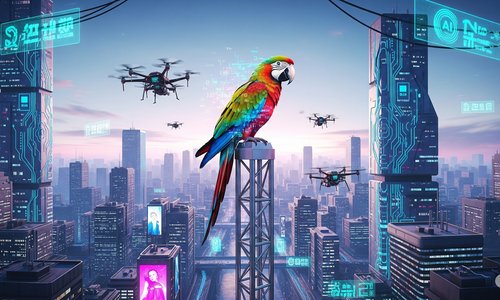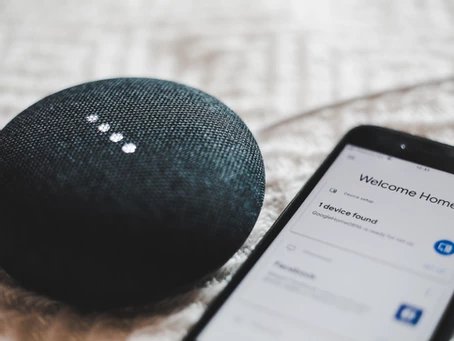
A Promessa e o Perigo da Nova Revolução Digital
A nova corrida tecnológica global levanta uma pergunta urgente: estamos prontos para confiar na inteligência que criamos?

Nas últimas semanas, operadoras de telefonia anunciaram que a rede 5G poderá ser experimentada por clientes de oito capitais a partir de julho de 2020. O padrão 5G é uma evolução da telefonia móvel 4G e deve permitir downloads até 20 vezes mais rápidos, consumindo menos bateria e suportando mais aparelhos conectados simultaneamente. Nessa primeira fase de implementação, as operadoras trarão a experiência do aumento de velocidade para celulares compatíveis com o 5G e apenas a partir de 2021 as instalações darão suporte aos benefícios completos que esperamos da tecnologia.
A propósito, expectativa sobre o assunto 5G tem fundamento. A rede será capaz de suportar o rápido aumento de dispositivos conectados, que é um efeito já esperado com a expansão da demanda de Internet das Coisas (IoT).
Nos últimos anos, dispositivos conectados vêm ganhando espaço nos lares e nas indústrias nacionais e ainda que muitas vezes a IoT soe como novidade, os brasileiros começaram a conviver com ela já no começo dos anos 2000, através das cancelas automáticas de pedágios. Hoje em dia, grande parte das rodovias possui praças de pedágio com leitores digitais que verificam a identidade dos carros e o saldo disponível enquanto os automóveis passam por uma região com velocidade controlada. Outros tipos de dispositivos também permeiam o nosso dia a dia: desde smart TVs e robôs aspiradores, até geladeiras industriais que reportam a temperatura durante sua operação. Estudos recentes da McKinsey mostram que 30% do mercado mundial de Internet das Coisas está nos dispositivos, como celulares, TVs e máquinas conectadas.
A boa notícia é que o 5G irá potencializar essa expansão ao evoluir de uma tecnologia 4G, que conecta pessoas e informações, para uma estrutura que conecta pessoas e máquinas a praticamente tudo. No Brasil, esse cenário mais conectado deve se popularizar nas grandes metrópoles nos próximos 5 anos, permitindo que cada vez mais informações sejam digitalizadas sem a necessidade de interação humana. Como consequência, poderemos tomar decisões com maior agilidade e, eventualmente, até automatizar algumas delas. Por exemplo, reduzir a iluminação de uma rua após um período sem movimentação de carros e pessoas, economizando dinheiro público e viabilizando outros projetos. Nesse caso, as tecnologias de conectividade facilitam a coleta de dados IoT e abrem espaço para o processamento dessas informações em larga escala, ou seja, na infraestrutura em nuvem que muitas empresas já vêm investindo.
No momento seguinte, como consequência do aumento do volume de dados processado na nuvem as soluções de Analytics sobre dados IoT começam a, de fato, gerar valor para os negócios.
De acordo com o Gartner, 80% dos projetos IoT terão um componente de Analytics. Ou seja, a grande maioria dos projetos deve explorar mais do que a simples coleta automatizada de dados e a sua respectiva visualização em tempo real. Uma pesquisa recente da Mordor Intelligence mostrou que o mercado de IoT Analytics irá quadruplicar nos próximos anos, saindo de US$17 bilhões em 2020 para US$82 bilhões em 2025. Como base de comparação, o mercado mundial de IoT deverá duplicar de tamanho no mesmo período, saindo de US$690 bilhões em 2020 para US$1,3 trilhões em 2025, podendo chegar a US$200 bilhões no Brasil.
Apesar do grande potencial, aplicações de IoT Analytics ainda são pouco exploradas devido à falta de conectividade. Algoritmos de Inteligência Artificial que já vêm sendo amplamente utilizados em aplicações offline devem passar a trazer muito mais valor quando plugados a dispositivos de pequeno e médio porte espalhados no nosso dia a dia. Dentre a longa lista de aplicações, podemos destacar que:
· O aprendizado por reforço irá aproveitar os dispositivos IoT para interagir com o ambiente em tempo real, recebendo estímulos positivos ou negativos de acordo com as ações geradas pelos sistemas e automatizando decisões tomadas pelos algoritmos através de microcontroladores conectados a atuadores e máquinas;
· O processamento de linguagem natural (NLP) irá potencializar o trabalho de assistentes virtuais que capturam comandos de voz e interpretam o seu conteúdo. Esses algoritmos permitirão o aumento de consultas por informações mais ricas contidas em dados estruturados e não-estruturados de uso pessoal e professional; e
· Algoritmos mais eficientes de análise e reconhecimento facial poderão trabalhar em tempo real com vídeos de câmeras de monitoramento para entender o sentimento de clientes do varejo e comportamentos suspeitos em ambientes controlados.
Em suma, o 5G é habilitador de aplicações de Analytics na Internet das Coisas e deve movimentar bilhões de dólares no Brasil nos próximos anos. Enquanto a tecnologia 5G amadurece e chega em larga escala no país, existem alternativas, como Lora e RFID, que viabilizam a realização de projetos de menor escala e já trazem valor para os negócios que estão investindo nessas áreas. Surpreendentemente, mesmo na crise atual, podemos observar grandes evoluções, pois a IoT permite a automação de processos repetitivos e trabalhos manuais, além do corte de custos e a conservação de recursos naturais. No entanto, no médio prazo, é fundamental entender como as tecnologias de Internet das Coisas e Inteligência Artificial se relacionam a fim de atingir o máximo potencial e beneficiar toda a sociedade com soluções eficientes.
Gabriel Dias é professor de MBA na FGV, Gerente Sênior de Analytics no Grupo Big e Consultor de Indústria 4.0. Possui PhD em Internet das Coisas pela Universidade Pompeu Fabra (Espanha), mestrado em redes sem fio pela Universidade de Berna (Suíça), bacharelado em Ciências da Computação pela UNICAMP e especialização em Ciência de Dados. Tem experiência de mais de 10 anos em projetos IoT na Europa e Ásia, além de ter coordenado projetos de Inteligência Artificial em grandes empresas brasileiras.

A nova corrida tecnológica global levanta uma pergunta urgente: estamos prontos para confiar na inteligência que criamos?

Por que dominar a IA será a nova alfabetização do século XXI

Conselhos de Administração devem evoluir da supervisão reativa para a antecipação estratégica, frente à crescente complexidade e volatilidade dos ambientes de negócios.

De 14 a 25 de julho, reserve suas manhãs das 08h00 às 09h30 para participar da tradicional Maratona I2AI! Uma jornada intensa com debates e palestras sobre temas essenciais: Ética,